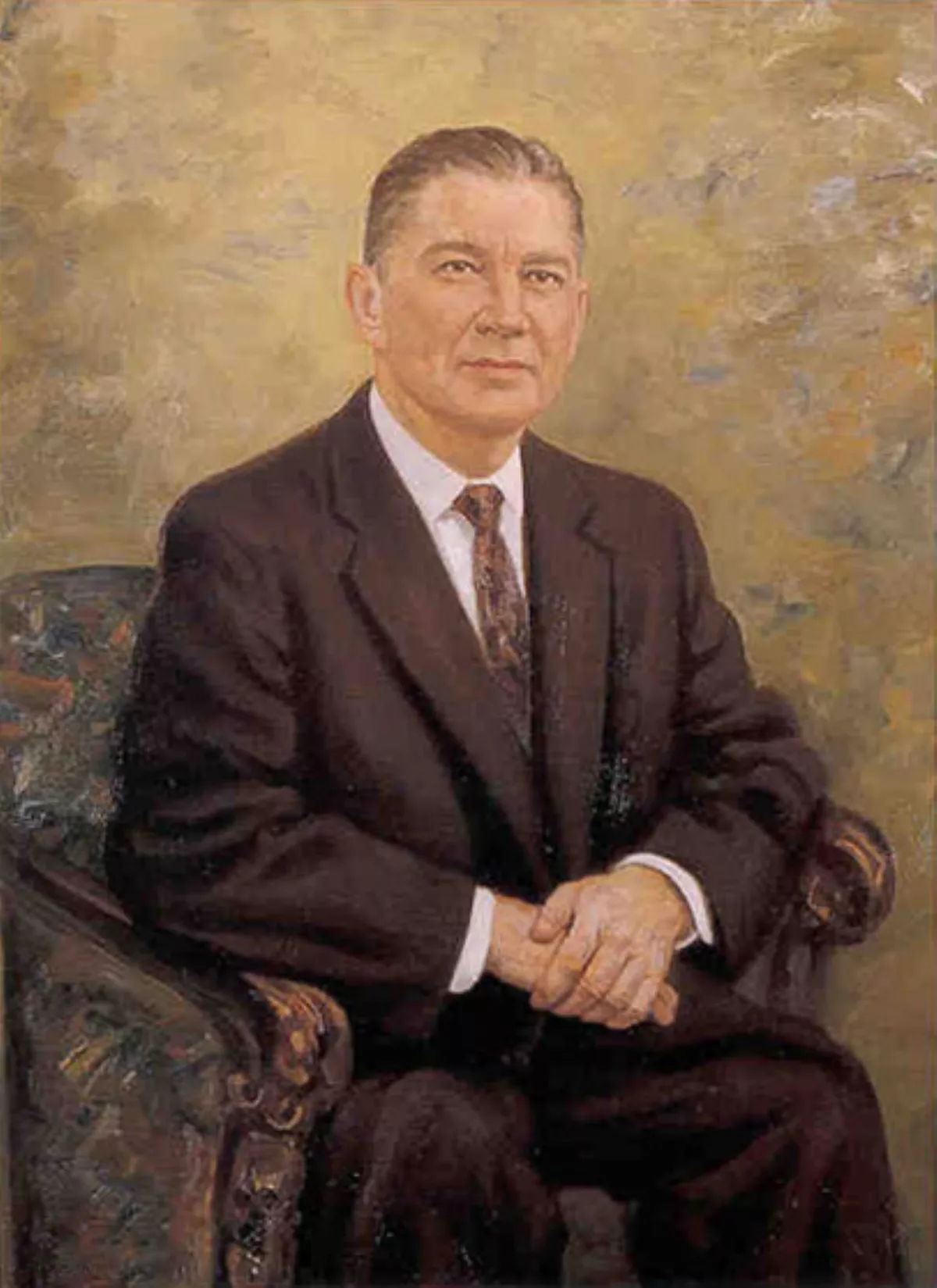 1.
1. Wilbur Daigh Mills was an American Democratic politician and lawyer who represented in the United States House of Representatives from 1939 until his retirement in 1977.

 1.
1. Wilbur Daigh Mills was an American Democratic politician and lawyer who represented in the United States House of Representatives from 1939 until his retirement in 1977.
Wilbur Mills served as the youngest ever county judge of his native White County, Arkansas, then won election to the US House of Representatives in 1938, the youngest elected from Arkansas.
Wilbur Mills was the architect of the Tax Reform Act of 1969, lowering rates on the poor, raising rates on the rich, and creating the alternative minimum tax, as well as a strong advocate for infrastructure projects, especially the Interstate Highway System.
Wilbur Mills' name was entered in a few states in the 1972 Democratic Party presidential primaries, championing an automatic cost of living adjustment to Social Security, to mixed electoral results in the primaries.
Wilbur Mills attended public schools in Kensett but graduated as valedictorian from Searcy High School in Searcy, the county seat of White County.
Wilbur Mills thereafter graduated from Hendrix College in Conway, Arkansas, as salutatorian, having resided in Martin Hall.
Wilbur Mills studied constitutional law at Harvard Law School under Felix Frankfurter, who later was nominated and confirmed as an associate justice of the United States Supreme Court.
Wilbur Mills returned to Arkansas to run his father's bank and assist with the store during the Great Depression and was admitted to the Arkansas Bar Association in 1933.
Wilbur Mills served as the 29th county judge of White County between 1935 and 1939, and began a small Medicare-like, county-funded program, with a $5,000 fund to pay for medical bills, prescription drugs which were sold at cost, and hospital treatment for the indigent, which were lowered to $2.50 per day, as well as having doctors see qualified patients free of charge.
Wilbur Mills served in the US House of Representatives from 1939 to 1977, including 17 years as chairman of the powerful House Ways and Means Committee, a post he held longer than any other person in US history.
Wilbur Mills was often termed "the most powerful man in Washington" during his tenure.
Wilbur Mills was a signatory to the 1956 Southern Manifesto opposing the desegregation of public schools ordered by the Supreme Court in Brown v Board of Education.
However, Wilbur Mills was never a segregationist personally: always a strong advocate for inclusion, his longest and closest aide was Walter Little, a black man from North Carolina.
Wilbur Mills told House Speaker Sam Rayburn that he was not going to sign the Manifesto, to which Rayburn responded by advising him that he would be defeated for re-election if he did not sign, so Wilbur Mills ultimately did.
Wilbur Mills initially had reservations about the program because he was worried about the eventual cost, especially since the early proposals by the President and some Members of Congress proposed funding Medicare from the Social Security Trust Fund.
Wilbur Mills expected correctly that health care costs would continue to rise dramatically over time and, thus, would bankrupt Social Security.
Wilbur Mills saw Social Security, Medicare, and Medicaid as programs that people need to rely on and it would be economically, psychologically, and politically devastating to terminate.
Wilbur Mills was acknowledged as the primary tax expert in Congress and the leading architect of the Tax Reform Act of 1969.
Wilbur Mills favored a conservative fiscal approach, adequate tax revenue to fund government programs, a balanced budget, while supporting various social programs, especially Social Security and Disability, adding farmers and public employees to Social Security, unemployment compensation, and national health insurance.
In 1967, when President Lyndon B Johnson required funds to support the cost of escalating the Vietnam War, Mills refused to support Johnson's proposed surtax and demanded that any tax increases be matched by equivalent cuts in federal spending.
Wilbur Mills congratulated him, as he had actually cut more spending even than Wilbur Mills had demanded.
Wilbur Mills was drafted by friends and fellow Congressmen to make himself available as a candidate for president of the United States in 1972 in a few of the Democratic primaries.
Wilbur Mills was not strong in the primaries and won 33 votes for president from the delegates at the 1972 Democratic National Convention, which nominated Senator George McGovern.
Wilbur Mills's name was mentioned as a possible Treasury Secretary in a McGovern administration.
Wilbur Mills was involved in a traffic incident in Washington, DC at 2am on October 7,1974.
Wilbur Mills was intoxicated, and his face was injured following a scuffle with Annabelle Battistella, better known as Fanne Foxe, a stripper from Argentina.
Wilbur Mills was taken to St Elizabeth's Mental Hospital for treatment.
Wilbur Mills held a press conference from Foxe's dressing room.
Wilbur Mills stepped down from his chairmanship of the Ways and Means Committee, acknowledged his alcoholism, joined Alcoholics Anonymous, and checked himself into the Palm Beach Institute in West Palm Beach, Florida for two months, where he was joined in treatment by Mrs Wilbur Mills.
Wilbur Mills chose not to run for re-election in 1976, and to continue to devote himself to his recovery and his work with other alcoholics in public office.
Wilbur Mills was succeeded by a family friend, Democrat Jim Guy Tucker.
Wilbur Mills is interred at Kensett Cemetery in Kensett, Arkansas.